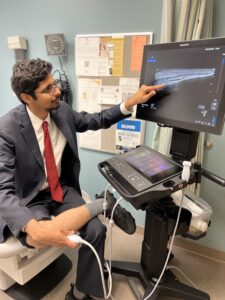It was like a reverse Uno card had been thrown onto the table. My patient was now asking his rheumatologist, “Are you okay? You look like you’re in a lot of pain.”
He was right. I was wincing trying to get up from my seat and limping trying to get a few steps over to the examination table. Stranger still, I didn’t have any pain or stiffness when I had sat down to begin the encounter only 30 minutes before. And while I was still functional during the visit, as the Friday afternoon clinic day went on, I became progressively more uncomfortable, to the point of needing a medical student to wheel me over in my chair from the patient’s room to the staffing area.
In retrospect, it’s kind of a funny role reversal, but in the moment, it was anything but. It was alarming, frightening and embarrassing—all at the same time. I was angry at my body and my immune system for not behaving like they should. Yet I was still lucky because I knew it was a flare of reactive arthritis. In fact, it was not even the first time that I had such a sudden lurch into acute inflammatory arthritis, so I did not panic. In fact, at every flare, I lean into it to better understand many of the life experiences of my patients.
Most of the time in this space, I rheuminate as a rheumatologist. Today, to commemorate Rheumatic Disease Awareness Month (RDAM), let me speak to you as a patient instead. So let’s rheuminate!
An Open Secret
One of my earliest memories is of my father falling on the floor, clutching his swollen and painful knee. He had called out to my mother to help him get up. Meanwhile, my older sister helpfully took me to the other room so I wouldn’t have to see this distressing sight. It was a flare of a mysterious condition that he has had since he was in his 20s. At the time, I had no idea what this was. I simply didn’t have the capacity to understand it, and I thought, maybe, this was something that everyone had once in a while. The fact that we didn’t even talk about it made it seem like a secret that was not worth exploring further.




